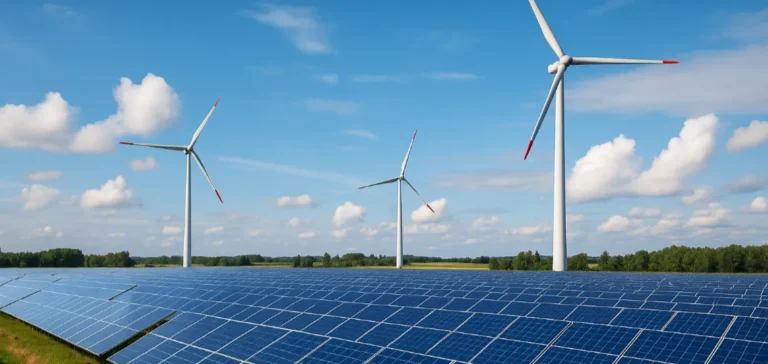Global renewable energy growth continues at a steady pace despite ongoing constraints in supply chains, electricity grids, and project financing. The International Energy Agency (IEA) estimates that worldwide renewable electricity capacity could increase by 4,600 gigawatts (GW) by 2030—equivalent to the current combined capacity of China, the European Union, and Japan.
Solar photovoltaics at the center of national strategies
Solar photovoltaics (PV) account for roughly 80% of the forecasted renewable capacity growth, supported by falling costs and shorter permitting timelines. Wind, hydropower, bioenergy, and geothermal follow, with geothermal power reaching record levels in the United States, Japan, Indonesia, and several emerging economies. Meanwhile, increasing grid integration challenges are reviving interest in pumped-storage hydropower, expected to grow nearly 80% faster than in the previous five-year period.
In emerging economies across Asia, the Middle East, and Africa, cost competitiveness and strengthened public policies are driving investments. India is on track to become the world’s second-largest renewables market after China, supported by dynamic auction systems and ambitious targets set for 2030.
Contrasting trends across technologies and regions
Despite overall optimism, some segments are showing slower momentum. Offshore wind power faces a 25% downward revision in growth forecasts compared with last year, due to regulatory shifts, rising costs, and industrial bottlenecks. Nevertheless, major developers are maintaining long-term deployment targets, reflecting continued confidence in structural demand.
Fatih Birol, Executive Director of the IEA, emphasized that solar PV will dominate global capacity additions over the next five years, while wind, hydropower, and bioenergy will remain essential to grid stability. Policymakers are urged to strengthen supply chain resilience and anticipate integration challenges as renewables gain greater prominence in national energy mixes.
Policy adjustments reshape market expectations
Global renewable growth forecasts have been revised downward compared with last year, mainly due to policy changes in China and the United States. The gradual phase-out of federal tax incentives and new regulatory measures have halved growth expectations in the U.S. market. In China, the shift from fixed feed-in tariffs to competitive auctions has reduced project profitability, leading to lower expansion forecasts.
However, momentum remains strong elsewhere. In India, Europe, and many emerging markets, the combination of ambitious policy frameworks, expanded auction volumes, shorter permitting processes, and growing rooftop solar adoption is strengthening growth prospects. Corporate Power Purchase Agreements (PPAs) now account for nearly 30% of expected global renewable additions by 2030—double their share from the previous year.
Industrial dependence and grid integration challenges
The global supply chain for solar components and rare earth elements used in wind turbines remains over 90% concentrated in China—a dependency expected to persist through 2030 despite diversification efforts underway in several countries. This concentration exposes the sector to geopolitical risks and cost volatility.
The rapid rise of variable renewables such as solar and wind is increasing pressure on electricity systems. The emergence of negative price events and curtailments highlights the urgent need for investment in grids, storage, and flexible generation. Several governments are launching new storage auctions to enhance network resilience, yet the scale of investment required to ensure reliable and cost-effective integration remains significant.
Slower progress in transport and heating
Renewable energy expansion will remain slower in the transport and heating sectors. Their share in global transport energy use is expected to rise from 4% to 6% by 2030, driven mainly by electricity for electric vehicles (EVs) in China and Europe, and biofuels in countries such as Brazil, Indonesia, and India. In industrial and residential heating, the renewable share will increase from 14% to 18%, marking gradual but still limited progress compared with electricity generation.






















